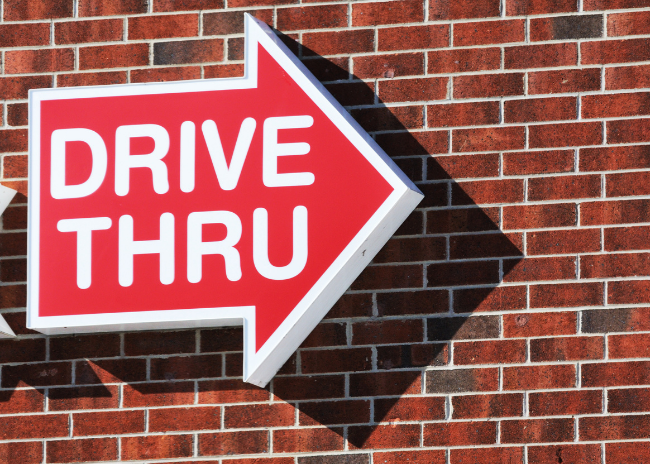COVID-19 may have put an end to what we deem as normal. From the CDC guidelines about safely reopening businesses to municipalities regulations that impact the ability to enjoy a meal at your favorite restaurant, the only true constant today is change.
 Carlos EspinosaSimultaneously, the wants and needs of the typical foodservice customer continue to evolve just as fast, if not faster than before. Topics that were previously an afterthought for consumers have become a focal point for most restaurateurs. Examples include number of customer touch points, putting cleaning and sanitizing on display and more. Restaurants continue to hustle as they try to adapt, and ideas that they would never consider in the past can emerge as important lifelines. Take, for example, the countless tents in parking lots that provide an infrastructure for dining alfresco. Operators continue to take such drastic steps to minimize risk and maximize what earning opportunities that exist at the moment.
Carlos EspinosaSimultaneously, the wants and needs of the typical foodservice customer continue to evolve just as fast, if not faster than before. Topics that were previously an afterthought for consumers have become a focal point for most restaurateurs. Examples include number of customer touch points, putting cleaning and sanitizing on display and more. Restaurants continue to hustle as they try to adapt, and ideas that they would never consider in the past can emerge as important lifelines. Take, for example, the countless tents in parking lots that provide an infrastructure for dining alfresco. Operators continue to take such drastic steps to minimize risk and maximize what earning opportunities that exist at the moment.
But these temporary solutions are not scalable for the larger restaurant chains. Those chains with enough foresight and capital that continue to plan for life throughout the pandemic have two things in mind: customer convenience and safety. The way the restaurant industry approaches this problem depends on the operator segment. For the purposes of this article, let’s focus on two: quick-serve restaurants and fast-casual.
QSR has been the segment impacted the least during the pandemic, and that’s largely because so many operators already offered limited-contact transactions via their drive-thru windows. In a typical drive-thru, customers place their orders remotely through an ordering post, and the only face-to-face interaction occurs during the transactional step of the process and when staff handoff the product.
All types of concepts continue to take on this longtime QSR trait as they now realize an unexpected labor benefit of not having to support dining room functions. Still, no solution is perfect. With dining rooms shuttered and catering business down significantly, restaurants will rely on the drive-thru and other similar forms of service, such as curbside, to achieve similar sales volumes as before. For this reason, certain concepts now tailor their facilities to help support the high level of drive-thru demand consumers keep requesting.
As a result, we now see, or will soon see, super-charged drive-thru facilities. These will feature multiple drive-thru lanes to serve multiple channels to address multiple forms of ordering including: traditional drive-thru customers, customers that order ahead and choose to pick up their meals, and third-party delivery drivers.
For facilities that feature these super-charged drive-thrus, restaurants can completely disregard the dining room, and the entire store becomes a production facility that can feed multiple drive-thru lanes, with limited face-to-face interaction with customers. From a facility design perspective, these types of facilities closer resemble manufacturing plants, or maybe dark kitchens, more so than actual restaurants, where the main focus revolves around station adjacencies, product flow, and maximizing throughput more than people flow. These super-charged drive-thru facilities offer operators a much better opportunity to fully maximize their resources, equipment, floor space and labor.
As for the fast-casual restaurants, they are not sitting idly by. In fact, some would argue fast-casual operators are attempting to de-evolve back into a QSR as best they can. Many fast-casual concepts fortunate enough to operate from a standalone or corner unit continue to look for ways to add drive-thru windows so consumers do not have to leave their cars to collect their food orders. But the majority of fast-casual concepts do not have this luxury, which means they continue to embrace curbside delivery. Certain operators have found that this so-called older approach presents greater sales potential than settling with third-party delivery vendors or even in-house delivery. Success in the curbside realm, though, requires proper design and execution. Operators must allocate dedicated areas for cars with customers picking up their orders curbside and employing technologies that signal customer arrival. When done correctly, curbside certainly can be a substitute for a drive-thru window, particularly if the time to produce the food is on the longer side.
One thing is certain, consumers’ needs and wants are constantly changing, but they still value the convenience of ordering out, as well as a quick, easy and safe method to pick up their orders. For the moment, and the foreseeable future, the ability to easily drive by a restaurant and safely pick up your food is KING, both for consumers and restaurants.




